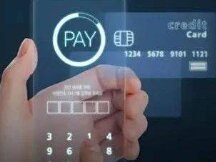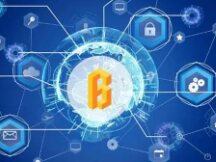History of blockchain development
Over nearly a decade of development, blockchain technology has had a profound impact on politics, industry, and culture. Melanie Swan divides the blockchain development phase into blockchain 1.0, blockchain 2.0, and blockchain 3.0 based on blockchain development, and through these three, you can clearly see the present and the future of blockchain.
The era of blockchain 1.0
The birth of Bitcoin marks the arrival of the time of Blockchain 1.0. Meanwhile, the development of blockchain technology has been associated with digital currency, and its applications mainly focus on currency exchange, exchange and payment. In a sense, blockchain technology is currently seen as a solution for money distribution and payments.
The definition of Bitcoin in the Baidu Encyclopedia is a form of peer-to-peer currency and a point-to-point transition to a decentralized payment system. After Satoshi Nakamoto announced and presented the concept of "Bitcoin", he became all researcher through the blockchain.
A major innovation in the days of Blockchain 1.0 was the development of distributed, open and transparent versions of data exchanges. Data is shared by all network nodes, modified by "miners", and managed by everyone, not just anyone. You can control this overview map. These technologies have had a profound impact on the financial industry following the production of two archives.
Features of the Blockchain 1.0 Era
Data layer: the structure of the data block is like a block
The so-called data blocking model means that data blocking in the system is bound in order by extension, completed by cryptographic and other means, and then connected end-to-end in order. order. When a new block is created, packaged, and sent to the block system, the nodes in the system must maintain the hash value of the old block in the new block, the current time, and the operating conditions used over time. Aggregates and downloads mek content, such as root value, for distribution to the entire network.
Since each block is connected to the previous block, as the length increases, it is necessary to recreate all the previous data to replace the exchange data of the blockchain, which is almost impossible, so that data security is guaranteed.
Complete report: Ensures the reliability of the file
In a blockchain network, activity history records are sent to each node, and each node can have and store complete and consistent data. Even if the records of individual nodes are changed or compromised, it does not affect the security of the entire data storage, and since the nodes of the entire network are connected point-to-point, there is no has no central server location, so no central server accesses the attack. At the same time, the built-in card functionality has effectively prevented the possibility of double spending.
asymmetryencryption
Asymmetric cryptographic algorithms are key blockchain applications that provide public and private keys to establish a secure environment for Bitcoin.
code source open source
Approval procedures and rules created in the blockchain network can be identified by opening the source code in the same way.
These features form the basis of blockchain development. Additionally, solutions to the "dual use" problem of blockchain technology are also critical to the success of Bitcoin application. The "dual use" problem can be easily understood as a way to ensure that all digital currency is only used once to avoid reuse.
Example: If there is no other organization like Alipay or WeChat, Mr. A direct transfer of 200 RMB from his account to MBM An account is maintained by MR Unless Mr. A deducts 200 RMB from his account , it can copy 200 RMB to many people, including C, D, and E. This phenomenon is common on the Internet, where information or music can be constantly printed for anyone who wants it and sent without paying.
So how do you prevent reuse of digital assets? As Satoshi Nakamoto stated in his free bitcoin form:
The update was announced to the entire network, so everyone on the network knew the change had happened.
Each node groups the received data exchanges into a single block.
Every newbie tries to find proof of work in their own block with enough difficulty to get the rights advertised.
When a node sees proof of operation, it announces it to the entire network.
Nodes also approve the usability of the block only if all operations contained in the block are valid and have not been preconfigured.
Recommended blocks are connected to the system and connected to other blocks on other chains, further extending the length of the chain. Due to the tamper-proof modification of the blockchain, after the new block enters the system, modify the data in the block, all the old data must be modified, thus ensuring the security features of the blockchain.
Trading 6 times in a row in the Bitcoin system is irreversible. In other words, the “6 no proof” principle: even once confirmed, the exchange data is packaged in blocks, and the data is permanently stored on the blockchain for 6 consecutive sections. Since each check takes a long time, 6 checks can take a long time.
In this case, if two contractors tried for the same amount, he cannot accept the change after the same time as the previous exchange because of the long warranty period, and because the second exchange cannot be confirmed after that the exchange has been confirmed. Generally, you can avoid the "double spend" problem.
Actual application in Block Age 1.0
Profits and payments were the most important applications in the era of Block 1.0, and virtual currencies represented by Bitcoin such as Litecoin, Dogecoin, Ripple, Futurecoin, Bitcoin, etc. appeared. There are thousands of digital rewards, of which around 700 still work. “Alternative currencies” have become “cash” on the Internet, opening up other financial worlds. In the application scenario of virtual currency, people can use it. Lots of human resources.
Currently, the blockchain has a significant impact on the financial sector. Blockchain technology is attractive for electronic exchanges, exports and payments. and external banks (shore banks or external agencies) are time-consuming and costly. After using blockchain technology, payments can realize end-to-end activities, eliminating middleman connections, which is fast and cost-effective. In particular, in terms of cross-border payments, the blockchain-based payment system can provide users with international cross-border payments and real-time payment services in all currencies, and cross-border payments are completed in an instant at low speeds. . the price. .
The era of blockchain 2.0
Features of the Blockchain 2.0 Era
If blockchain 1.0 solves the problem of decentralization of funds and payments, then the problem that blockchain 2.0 solves is market decentralization, and the key word right now is “commitment”. As a result, blockchain technology has achieved great success everywhere including in industry, commerce and finance, including commodities, contracts, futures, loans, mortgages, loans, mortgages and real estate.
The evolution of blockchain 1.0 to 2.0 was for some processes driven by Satoshi Nakamoto's first blockchain design idea. Regarding the development of the blockchain, Satoshi Nakamoto mentioned in a public email in 2010: Double Order, Multi-Signature, etc. If Bitcoin can improve in size in the future, these changes will be something we want to explore in the future, but these changes must be decided early in their design and made possible for the future. "
In a first configuration, blockchain technology continues to evolve based on Bitcoin. Satoshi Nakamoto's vision is based on three main ideas. This means an end-to-end direct price trade distribution in the public ledger, a robust writing system that handles any rules or currencies, and more. Bitcoin is known as the first and third technology outlet is Ethereum. It can be said that the emergence of Ethereum represents the era of blockchain 2.0, and the development of this period is closely related to the development of technology contracts.
In the context of Ethereum, it can be defined as an open-source block-based system that can run any blockchain and protocol. Like Bitcoin, Ethereum is controlled by no one and controlled by all participants in the world. Like the Android system, it provides users with a very rich API, allowing many people to quickly create multiple blockchain applications. Today, there are over 200 applications on Ethereum.
Smart contracts are one of the great features of Ethereum and form the technological foundation for programmable currencies and programmable finance. The concept of "smart contract" was first developed by cryptographer Nick Szabo in 1995. This concept can be easily understood as follows: a set of digital scripts of promises, the principle that once a contract is created, a smart contract can be executed on the blockchain system without the involvement of third parties, all embodies the principle of the programmer. He always believed that "the code is the rule". Although the period in which this concept was developed was not short, Ethereum did not exist until smart contracts were widely used, and Ethereum provided knowledgeable and programmable processes for development. .
A prerequisite for the success of smart contracts is that the terms of the contract cannot be compromised and that the process of realization is open, transparent and reliable. Since the development of blockchain technology, features such as decentralization, tamper resistance, group management, and traceability have become a natural symbiotic environment for smart contracts. Based on this, if the next-generation blockchain application represented by Ethereum is strictly integrated with smart contracts, blockchain technology can be further improved. In Ethereum, after creating a smart contract, it was decided by a program and no one could prevent its execution. Smart contracts in Ethereum can manage many physical assets and make the process more complex and efficient.
To understand the implications of smart contract, let us give you an example of flight delay check to receive payment during flight delay, you need to contact the insurance company department and provide the relevant evidence. Insurance companies will take a long time to pay. When a flight delay contractor receives a technology agreement, if the flight delay occurs, the termination of the passenger's flight contract and the insurance company is terminated, and refunds are sent to the passenger's account.
Working well, Ethereum was able to establish a baseline goal principle that provided full Turing scripts, and smart contracts could be written to run on the system. Here we try to understand the main point of Turing performance, that is, programming languages that can solve the needs of any algorithm.
Due to the need to support smart contracts, Ethereum has two types of account addresses: one for fixed funds and one for fixed funds. A regular account is similar to an account in the Bitcoin network, and the contract is used for smart contracts.
From how Ethereum works, we can see that blockchain provides a trusted source for executing smart contracts and smart contracts facilitate the deployment of blockchain applications. . At the same time, the use of this technology continues to outweigh the benefits and go to more places with greater relevance.
Strategies in the Age of Blockchain 2.0
Thanks to the open programming environment and the application of smart contracts, blockchain has developed rapidly during this period. Its program has expanded beyond benefits to financial benefits such as futures, contracts, hedges, personal funds, commodities, annuities, financial aid, manufacturer and options. Additionally, electronic processes such as journaling, creative data, and legacy data have been integrated into the blockchain to visualize potential productive and impossible workplaces on the blockchain.
In the blockchain represented by Ethereum, people can write numbers to the assets and create new blockchain tools. Simply put, they can provide their own blockchain token, which provides the process, token name, process issued is all. for you. At the same time, you can write smart contracts such as voting, gambling, contracts, etc. to create the functions of the blockchain tools.
Although blockchain-based smart devices are still in their infancy, their potential is real. In the future, one can imagine that any property in the name of a person, such as real estate, will enter the blockchain in the form of an information text. Make a Mind: As the events are recorded in a will, testament and will come to pass after many years of fulfillment, and these treasures will be automatically passed on to the beneficiaries accordingly as and when desired. This should be decided by a third party, such as a court or a lawyer. At this time, the work of lawyers will also be greatly changed, from designing smart contracts to blockchain contracts to contractual agreements, and people will be involved in many P2P industries based on smart promise. Then people will no longer have to worry about breach of contract and fraud by human greed. We are committed to strengthening fairness and integrity.
In short, in the era of Blockchain 2.0, blockchain technology that establishes smart contracts can benefit from the investment of data distribution products that can be used to register, decide and exchange various types of assets and contracts. . However, while blockchain 2.0 is still in its infancy, many applications are still based on the concept, the landing application scale has not yet been developed, and most operations still have to pass the proof period. However, its widespread use has attracted the interest of people from China, the United States, Israel and most European countries, and has invested heavily in research. Experts predict that the era of blockchain 2.0 will be the time of blockchain explosion.

The era of blockchain 3.0
The era of blockchain 3.0 is also the time to strengthen community involvement through the use of blockchain. In addition to finance, industry, etc., the application of blockchain in today's life is wider, especially in government, health, science, culture, custom, and art.
Before discussing the era of blockchain 3.0, let's understand some concepts like Dapp, DAC, DAO, DAS.
Dapp (Decentralized Application): Decentralized Application
Decentralized Autonomous Company (DAC): Decentralized autonomous company.
Decentralized Autonomous Organization (DAO): Decentralized Autonomous Lub koom haum.
DAS (Decentralized Autonomous Company): Decentralized Autonomous Company.
The changes made to the blockchain application can be considered as the history of Dapp improvements to DAC, DAO and DAS. Once blockchain technology was used for relationship management, we entered the era of blockchain 3.0.
In the case of government intelligence developed on the basis of blockchain, it can be assumed that it can perform public functions such as storing public data, managing revenues at the national level, to distribute community resources and solve problems. . In this process, public records such as land tenure, company registration, marriage registration, and medical records management can be kept safe and complete. . When a child falls to the ground, the provider uploads information such as the child's date of birth to the blockchain's public electronic identification system, identifies the child, and provides the child's identification. Government institutions, electronic personal information will include child's life, then school, health, property, employment, credit, etc. of the child. Other information is linked to the identity and stored in the blockchain. When he died, the need began with him, the property was distributed to his heirs, and no new information was added to the information system.

Scan QR code with WeChat






























